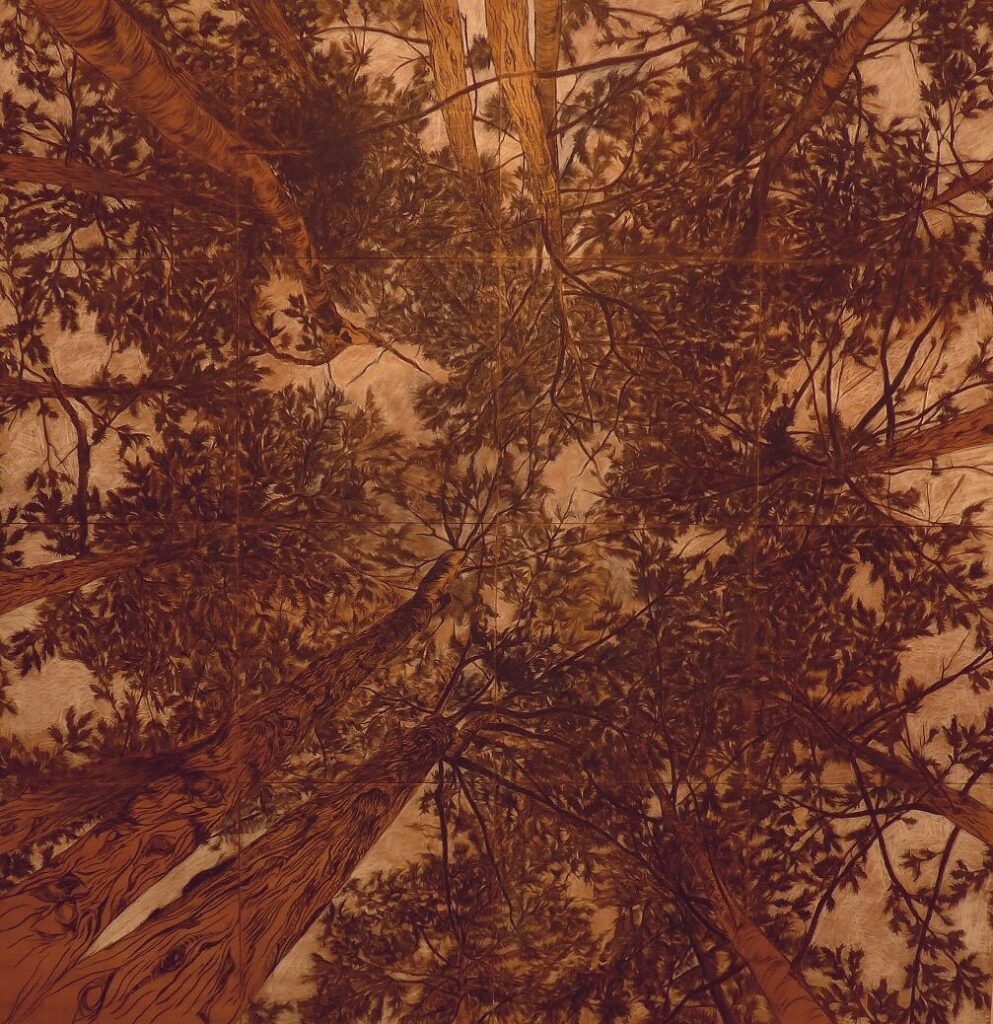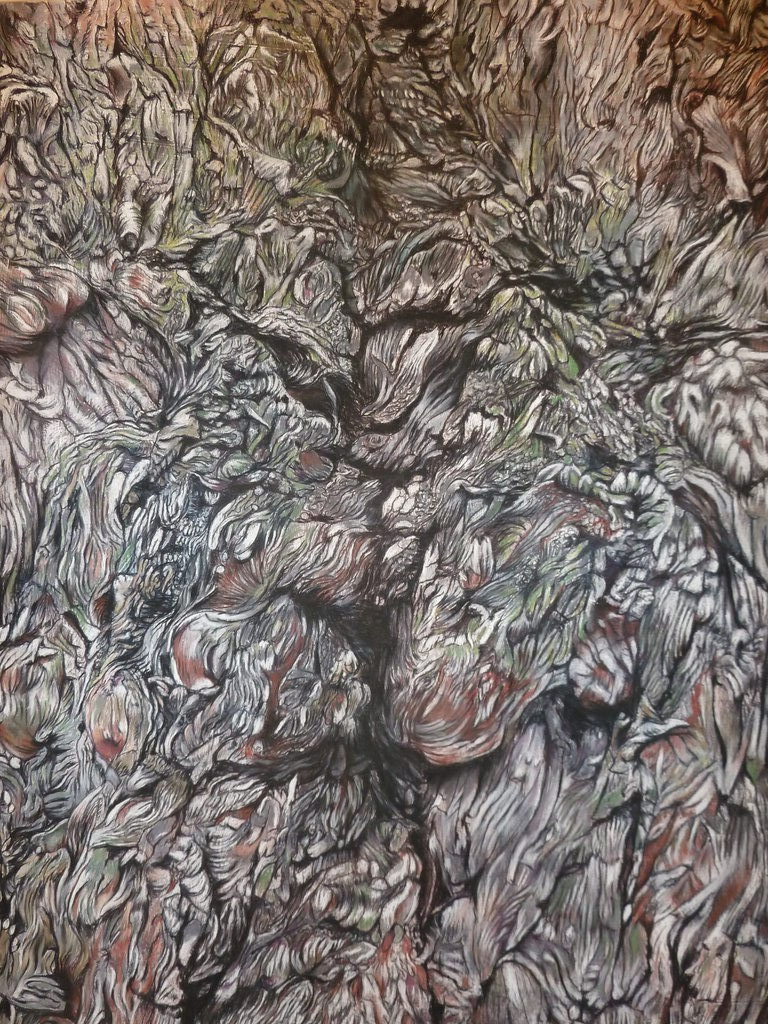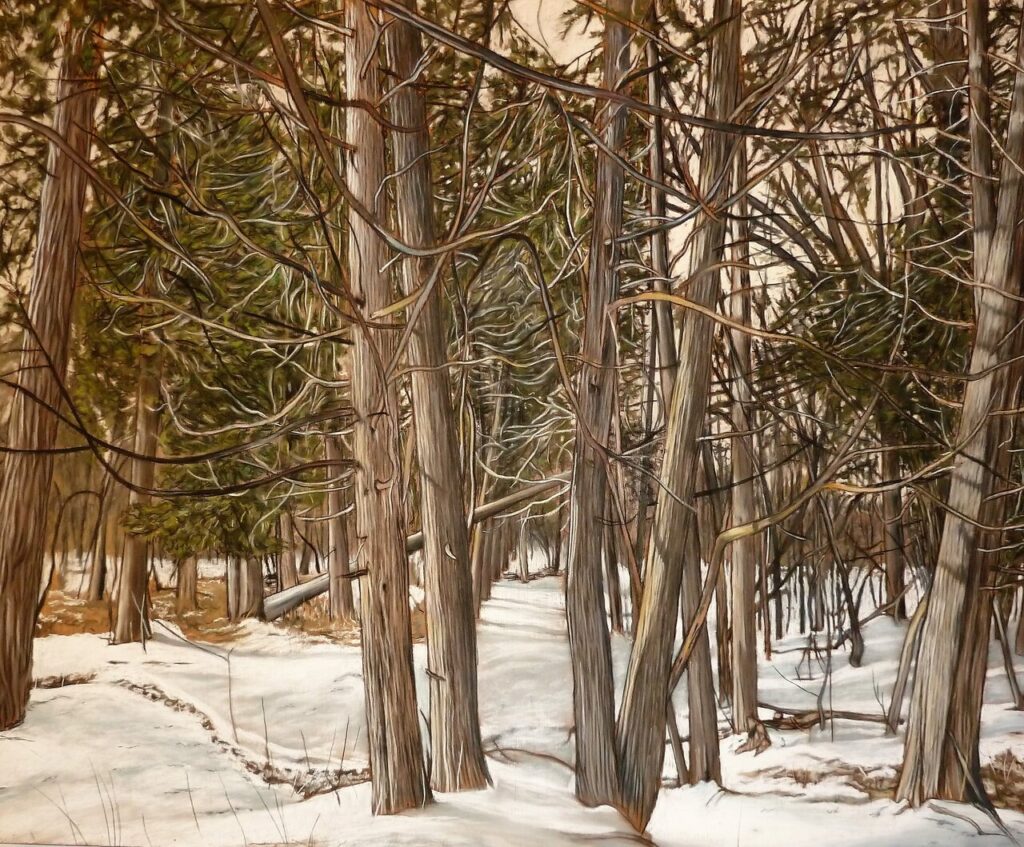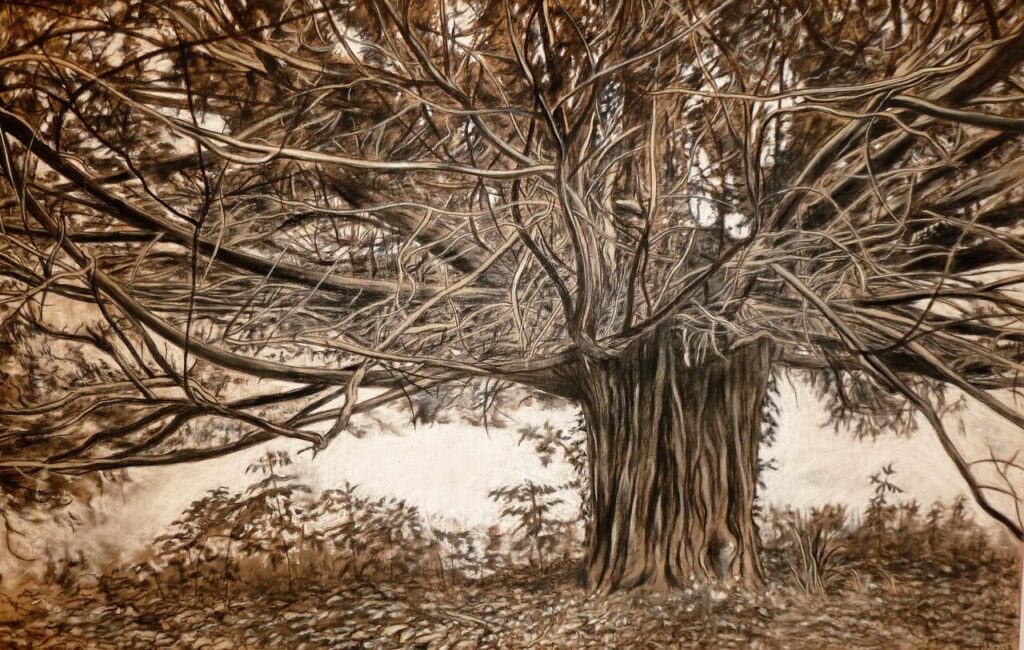Alcock’s fascination with trees is somewhat contagious when viewing these detailed pastel and charcoal drawings. Dominating the room is Canopy an 8 x 8 ft work that was done in 1995 in London, UK, a year after he graduated from OCA (now OCADU). It remained in London and was shipped to Toronto and put together for this exhibition.
Hugh Alcock, Canopy, 1995, pastel and charcoal, 96″ x 96″
Alcock knows his trees very well. He studies them for a long time, returns to them again and again. Sometimes he travels to far distances to visit a special one, as he did this summer by going to the Bruce Peninsula National Park just south of Tobermory. As he said, there, along the cliffs on the coastline, are many white cedars that are centuries old. The oldest recorded is 1,300 yrs-old, making it one of the oldest in Canada. The whole of the peninsula and the Georgian Bay area generally was clear-cut in the 19th century. The cedars in the park survived only because of their inaccessibility, making them economically unviable. So in this historical sense, as well as their age, they are rare. “I seek these original growths out because of my interest in nature ‘stripped of our concerns and preoccupations’ as I put it in my statement”. His love of trees goes beyond their static presence as he sees them moving in the wind, changing their shape, each with their own beauty. Every work shows its own attention to detail, some more dense than others but all stand their ground with their own quiet appeal.
Hugh Alcock, In Memoriam, Study of Willow Bark, 2020, charcoal & pastel on wood, 48″ x 42″
Alcock emphasizes that the absence of humans is intentional in his works. He doesn’t want to humanize the trees he depicts, but rather portray their own specific nature. But, even without humans, many trees have long lives —many over a hundred years — so they have their own histories. Do they remember being young or the strength of storms long passed? Do they feel the difference between a spring breeze, a warm summer wind or a freezing winter storm – the passing of time? I am sure they do. Growth rings show clearly the years they’ve lived.
Alcock’s trees never seem to be in a happy state of summer blooming. If there are leaves on them, they are few and browning unless they are evergreens. What we see is mostly their bare branches, as in Cedars, where they seem to reach out to others. Trees are not lonely creatures, they communicate with each other and support each other. Trees create a better community than humans do, as there is no cruelty between them. Humans, on the other hand, have been busy eliminating forests, sometimes without any real need. Alcock quotes Bill McKibben: “We have killed off nature – that world entirely independent of us which was here before we arrived and which encircled and supported our human society.” This makes the artist sad.
Hugh Alcock, Cedars, 2022, pastel and charcoal on wood, 32″ x 40″
Many times, Alcock depicts lonely trees, as in Yew Tree. As its size suggests, it is very old. What caught my eye at first sight is its trunk. It seems that at the beginning there were many little trees that became somehow bound together, switched around each other, creating this large, strong tree. I have seen images of yew trees that have a space in their trunks. Were these trees humans used in their myths to encapsulate but keep alive magic men and priests of now forgotten religions? There is definitely some magic in Alcock’s trees. Their loneliness and muted colours remind me of the German poet, Goethe’s forests, and the mysterious darkness of them.
Hugh Alcock, Yew Tree, 2022, pastel and charcoal on wood, 32″ x 48″
Trees in nature are often overlooked as Alcock observes. His interest in them becomes infectious when walking into the room. Different viewers in the gallery all have their favourite work, as a certain one seems to appeal to them. Some go as far as trying to build a narrative, while others just lose themselves in looking at them. As the artist states “My work, then, is a lament that highlights the quiet beauty of the natural world “. Indeed, in a world where nature and trees themselves seem in peril, it is good that artists such as Alcock remind us of the precious beauty that we often take for granted.
Colin Phillips and Emese Krunák-Hajagos
Images are courtesy of the artist and Gallery 1313
*Exhibition information: September 28 – October 9, 2022, Gallery 1313, 1313 Queen St W. Gallery hours: Wed to Sat 1–5pm, Sun 1–4pm.




